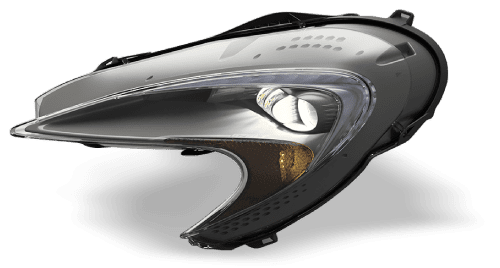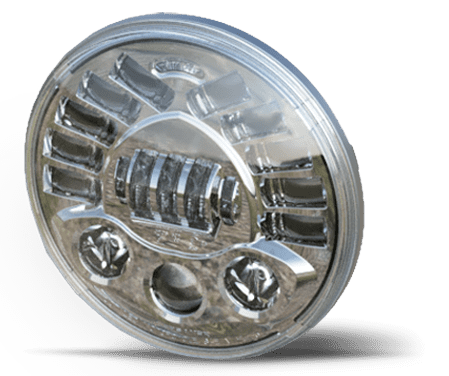
How To Properly Install LED Headlights: A Step-by-Step Guide

Replacing traditional halogen bulbs with LED headlights offers a significant upgrade for anyone managing vehicle fleets or focusing on operational efficiency. LED headlights provide increased brightness, improved energy efficiency, and enhanced durability, making them crucial for professionals aiming to boost performance while reducing operational costs.
Consult this step-by-step guide to learn how to properly install LED headlights today.
Understanding the Benefits of LED Headlights
LED headlights are quickly becoming the industry standard across various sectors involved in transportation and logistics. Their most notable benefit is unmatched brightness and clarity. LED technology offers a whiter, more focused beam of light that greatly improves visibility for night driving or while navigating challenging weather conditions. This can drastically reduce the likelihood of accidents, directly promoting fleet safety.
Another crucial advantage is energy efficiency. Unlike traditional halogen bulbs, LED headlights consume far less power. This translates into reduced strain on a vehicle’s electrical system, minimizing wear and tear while optimizing fuel efficiency over time.
Additionally, LEDs are widely beloved for their longevity, often lasting up to 25 times longer than halogen bulbs. For fleet managers, this means fewer replacements and savings in both time and money.
When safety, energy efficiency, and cost reduction are top priorities, upgrading to LED headlights provides a cutting-edge solution for business vehicles. However, ensuring a smooth installation process is critical for taking full advantage of these benefits.
The following sections break down everything you need to prepare and execute a professional LED headlight installation.

Proper Preparation Is Critical Before Installation
Whether you’re overseeing a fleet upgrade project or just handling a single vehicle, preparation is an essential step before embarking on the LED headlight installation process. Gathering the appropriate tools and materials ahead of time not only saves you time but can also prevent costly mistakes.
First, ensure that you’ve selected LED headlights compatible with your vehicle’s make and model. LED headlights come in various designs and sizes, and matching the correct type is vital for performance and safety.
Consult your vehicle’s manual and read product listings carefully to verify compatibility.
Besides the LED headlights themselves, having the right tools is a necessity. You’ll need basic hand tools, including a screwdriver, pliers, and socket wrenches.
Additionally, many LED headlight installations require specialized components such as voltage regulators or anti-flicker adapters, depending on the vehicle’s electrical system configuration. Having dielectric grease to protect the connectors from moisture and corrosion is also highly recommended for vehicle longevity.
Once you have these materials ready, ensure that the work area is well-lit and free of obstructions.
A clean and spacious workspace allows you to focus on accuracy and safety during the installation. If possible, maintain the vehicle on a flat surface and consider elevating it for easier access, especially in larger commercial vehicles.
Ensuring adequate preparation is the foundation for executing a professional-grade LED headlight installation process.
Guiding You Through the Installation Process
At J.W. Speaker, our selection of LED headlights for sale makes it easy to find a suitable match for your vehicle. Once you find a good fit for your ride, you can begin the installation.
Installing LED headlights can seem intimidating at first glance. However, breaking it down into manageable steps can simplify the process while ensuring it’s carried out efficiently.
Not only is a precise installation critical for optimal performance, it also safeguards the longevity of your headlights and your vehicle’s electrical system.
Begin by switching off the vehicle’s engine and disconnecting the battery to prevent any electrical issues during the installation. Locate the existing headlight assembly, typically found within the engine bay behind the headlight housing.
Remove any covering or dust caps by unscrewing or detaching clips as per your vehicle’s design.
Carefully disconnect the halogen bulb from its wiring harness. Replace the old bulb with your LED headlight, ensuring proper alignment within the housing. LEDs require precise positioning to maximize beam performance and avoid creating blind spots.
Some LED headlights are polarity sensitive, meaning they only work when installed in the correct orientation. If the headlight doesn’t power up once connected, detach it and reverse the polarity before reinstalling.
Further, some vehicles may experience flickering because of electrical inconsistencies. Anti-flicker adapters, if not already included in your LED kit, can be used to rectify this issue.
Finally, replace any dust caps or coverings and reconnect the vehicle’s battery. Switch on the headlights to test their performance. Make micro-adjustments to the beam angle if necessary to ensure an even spread of light across your field of view. Completing these steps thoroughly ensures a structured and professional installation that maximizes safety and lighting efficiency.

Steps To Resolve Common Challenges in Headlight Installation
Any worthwhile step-by-step guide discussing how to properly install LED headlights must also touch on the potential problems you can encounter.
Even with the best planning, issues during the installation process are sometimes unavoidable. However, recognizing these problems early and resolving them efficiently can keep the process on track while ensuring a successful outcome.
One common issue involves hyper-flashing, where the LED headlight blinks rapidly. This is commonly due to a mismatch in resistance between the new LED headlights and your vehicle’s electrical system. Installing a load resistor can address this issue quickly and effectively.
Moisture buildup in the headlight housing is another problem frequently reported during installations. This typically occurs if the housing is improperly sealed or if the surface around the dust cap has dirt or residue. Ensure all components are thoroughly cleaned and sealed to avoid moisture-related damage to both the LEDs and the housing itself.
Poor beam positioning is another challenge, especially in multi-vehicle installations.
Improper alignment can lead to an uneven spread of light and create distractions for other drivers on the road. You can resolve this by carefully adjusting the headlight assembly’s alignment screws, which control vertical and horizontal beam angles.
Should these issues persist, consult the instruction manual that accompanies most LED headlight kits, or reach out to the manufacturer directly. Addressing these challenges head-on ensures that the installation is not just complete but meets professional safety and performance standards.
Optimizing Your Vehicle With High-Quality Lighting
Successfully installing LED headlights is not simply about improving visibility. It represents a broader commitment to innovation, operational efficiency, and safety, which are critical factors for fleet managers, engineers, and other professionals charged with maintaining top-performing vehicles. Through proper preparation, precise execution, and proactive troubleshooting, your team can enjoy all the benefits LED technology has to offer.
Take pride in the results of your efforts. Enhanced road safety and decreased operational costs are achievements worth celebrating. Beyond the installation process, reviewing the performance regularly and conducting periodic maintenance can further underscore the long-term advantages of switching to LED headlights.
When aiming to enhance a fleet’s performance or optimize a vehicle’s operations, choose high-quality lighting solutions like LEDs.


